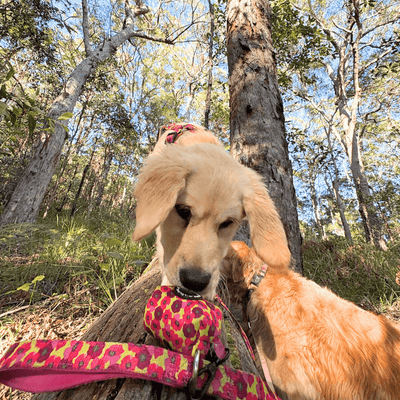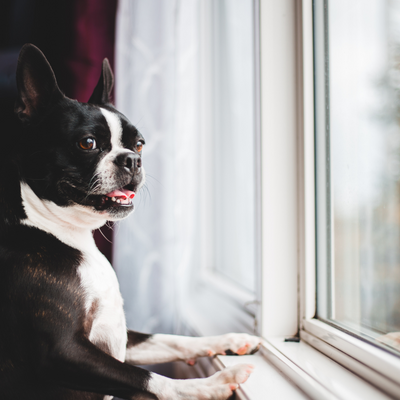Natural disasters can be unpredictable, and as a pet owner, it’s important to have a plan in place to ensure the safety and well-being of your furry companions during such events. Whether it’s a flood, bushfire, or storm, being prepared can make all the difference. Here are some essential steps to help you prepare your pets for an emergency and ensure they remain safe and cared for when disaster strikes.
1. Create a Pet Emergency Kit
A well-stocked pet emergency kit is essential. This kit should be able to support your pet for up to two weeks and provide the basics for their care in case of an emergency.
What to include:
- A copy of your pet preparedness plan, including pet registration details and emergency contact numbers.
- Up to two weeks' worth of pet medications, along with medical and vaccination records.
- Sufficient food and bottled water for each pet for at least two weeks.
- A familiar blanket or bedding, along with toys and grooming equipment.
- A secure pet carrier, leash, or harness to safely transport your pet.
- Sanitation supplies like spare newspaper, paper towels, disinfectant, and rubbish bags.
- A current photograph of your pet for ID purposes.
Tip: Regularly check your emergency kit to ensure that items are fresh and safe to use, especially food and medications.
2. Moving Your Pet to Safety
In the event of a disaster, it’s crucial to act early to ensure your pets are moved to safety before the situation becomes more dangerous.
- Things to remember:
- Secure your pet inside before an emergency event to prevent them from running away or taking flight.
- Use a secure carrier, leash, or harness to move them to safety.
- Ensure your pet's vaccinations are up to date, as you may need to visit shelters or boarding facilities.
- If it’s not safe to keep your pet with you, try to find a safe location with family, friends, or a foster home. Always send along their emergency kit, including food, medications, and essential documents.
- Ensure your pets are properly identified with up-to-date registration tags and microchips. Carry a current photo to help identify you as the legal owner.
3. Leaving Your Pet at Home
Every effort should be made to take your pet a safer location if necessary. If you need to leave your pet at home during a disaster, it’s important to ensure they are in a safe, secure area where they can be as comfortable as possible. Ideally, keep your pets indoors in a room that is easy to clean, like a bathroom or laundry room. If that’s not an option, create a sheltered outdoor area with proper ventilation. Avoid leaving them in rooms with potential hazards such as large windows, plants, or heavy objects that could pose a risk. Never leave pets outside without shelter, food, and water. In case of flooding, provide access to an elevated refuge, like a benchtop or shelf. Make sure to supply food and water in heavy, tip-resistant bowls, and consider using a slow-dripping tap or leaving the toilet bowl open as an alternative water source. Also, don’t forget to include toilet litter if necessary.
4. Emergency Shelters
If you’re relocating to an emergency evacuation centre, it’s essential to bring your pet’s emergency kit along with you. Make sure your pet is securely restrained in a leash, harness, or carrier for transport.
If your pet isn’t a dog or cat, you may need to seek specialised advice. Contact organisations like the Department of Agriculture, Fisheries and Forestry for livestock, or your vet for reptiles, birds, and other animals.
6. Easing Pet Anxiety
Emergencies can be stressful for both humans and pets, and it’s important to recognise the signs of anxiety in your pets.
Signs of anxiety in pets can include excessive barking or meowing, hiding or cowering, drooling and excessive panting, and destructive behaviour.
If you notice that your pet is stressed, consider using calming aids like pheromone diffusers, calming collars, or anxiety wraps as well as keeping a favourite toy or blanket close to provide comfort.
7. Plan Ahead and Be Ready
Emergencies can be stressful, but with proper planning, you can ease the anxiety for both you and your pets. Take the time to create a pet-specific emergency plan and kit, regularly check supplies, and ensure your pet is identified and ready to be safely relocated if needed. If you're ever in doubt, your local pet shop or animal welfare organisation can provide additional support and guidance.
By taking the necessary precautions and planning ahead, you can ensure that both you and your pets stay safe, no matter what nature throws your way. Stay prepared and stay safe for anything that life throws at us!






